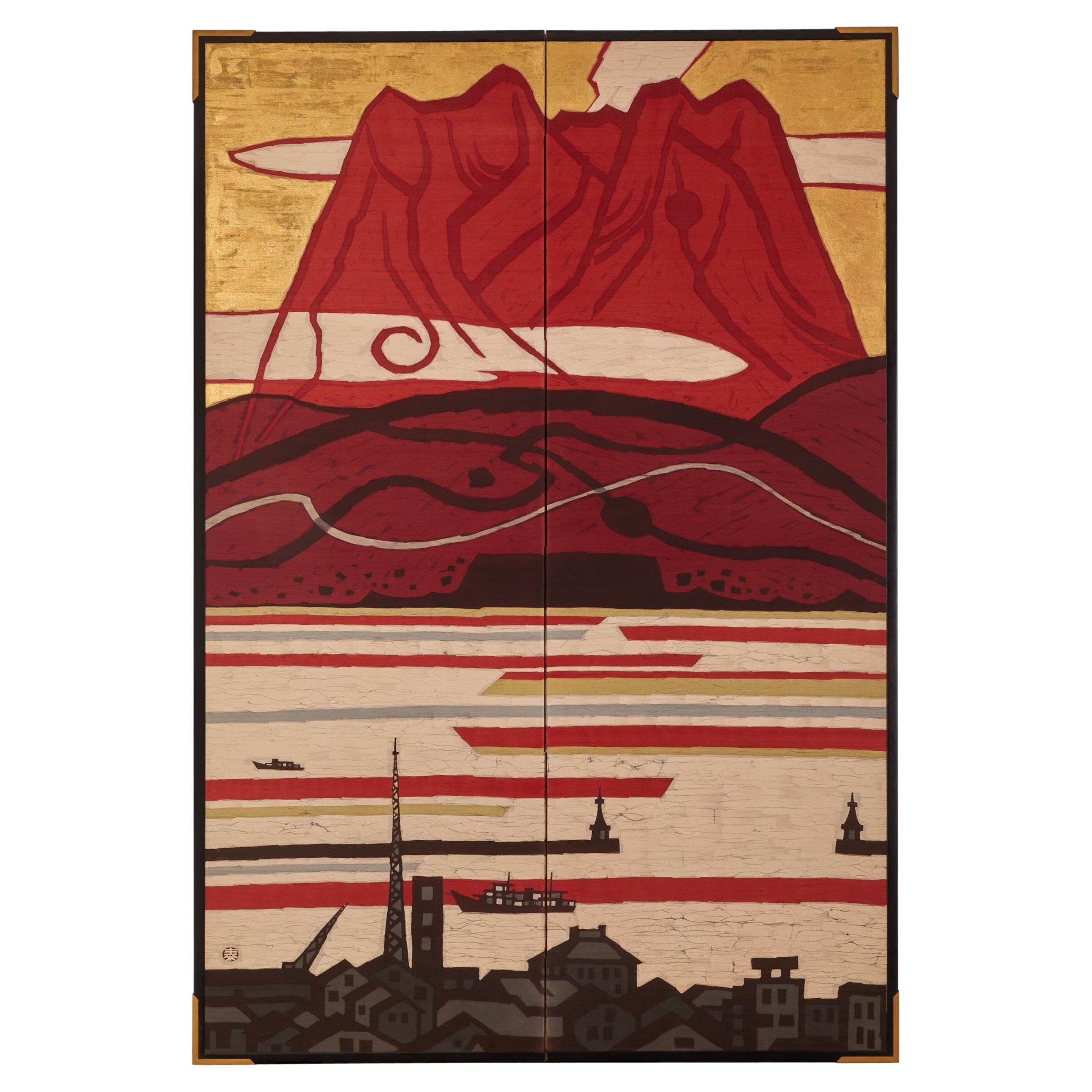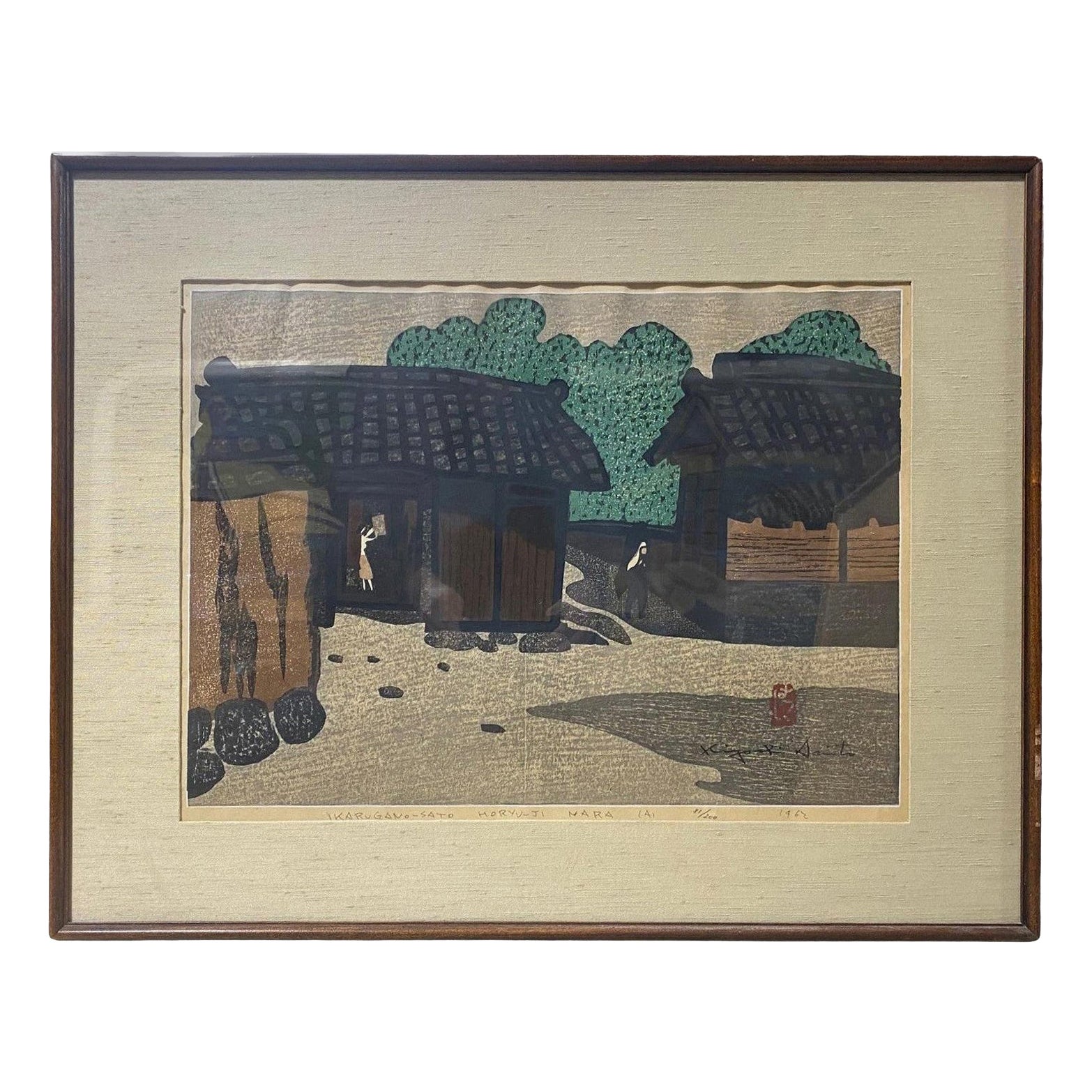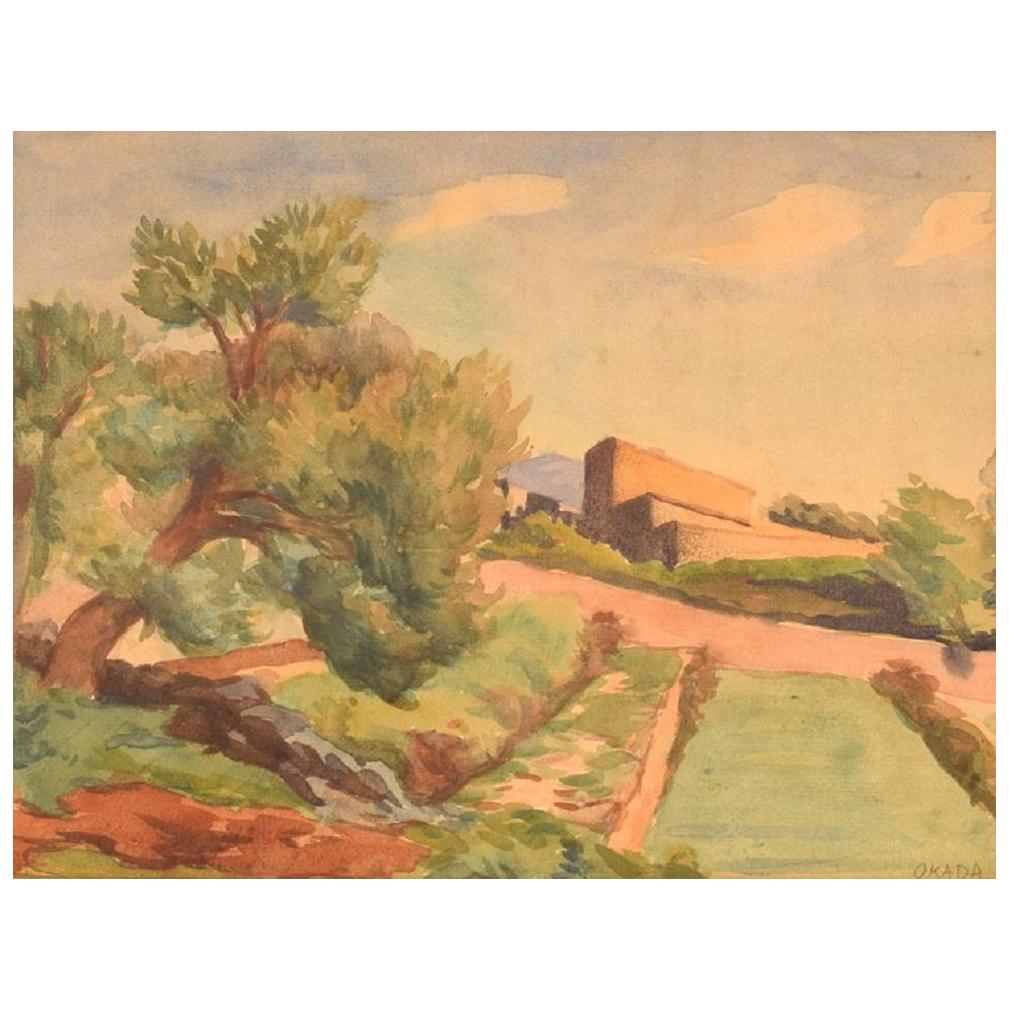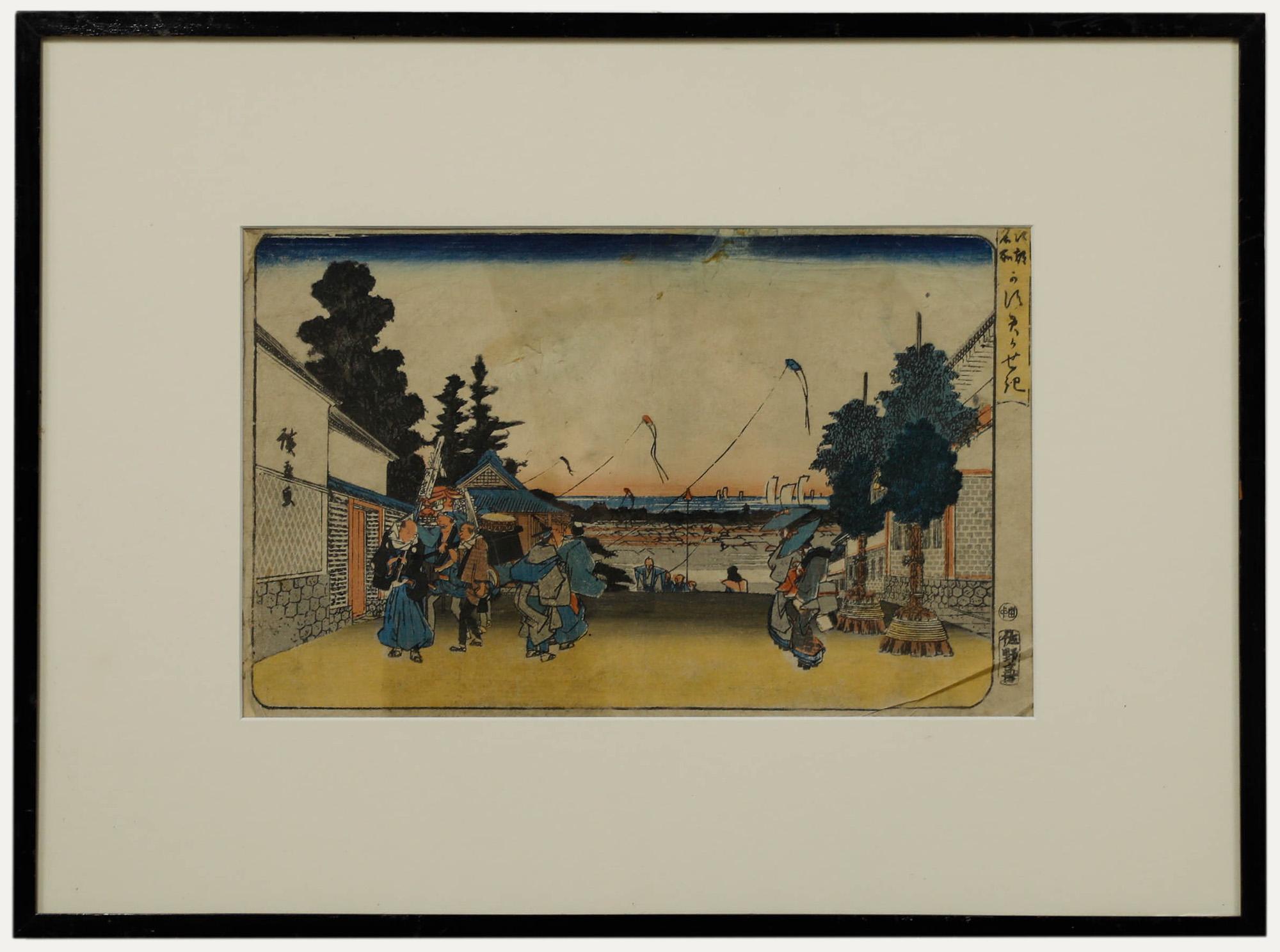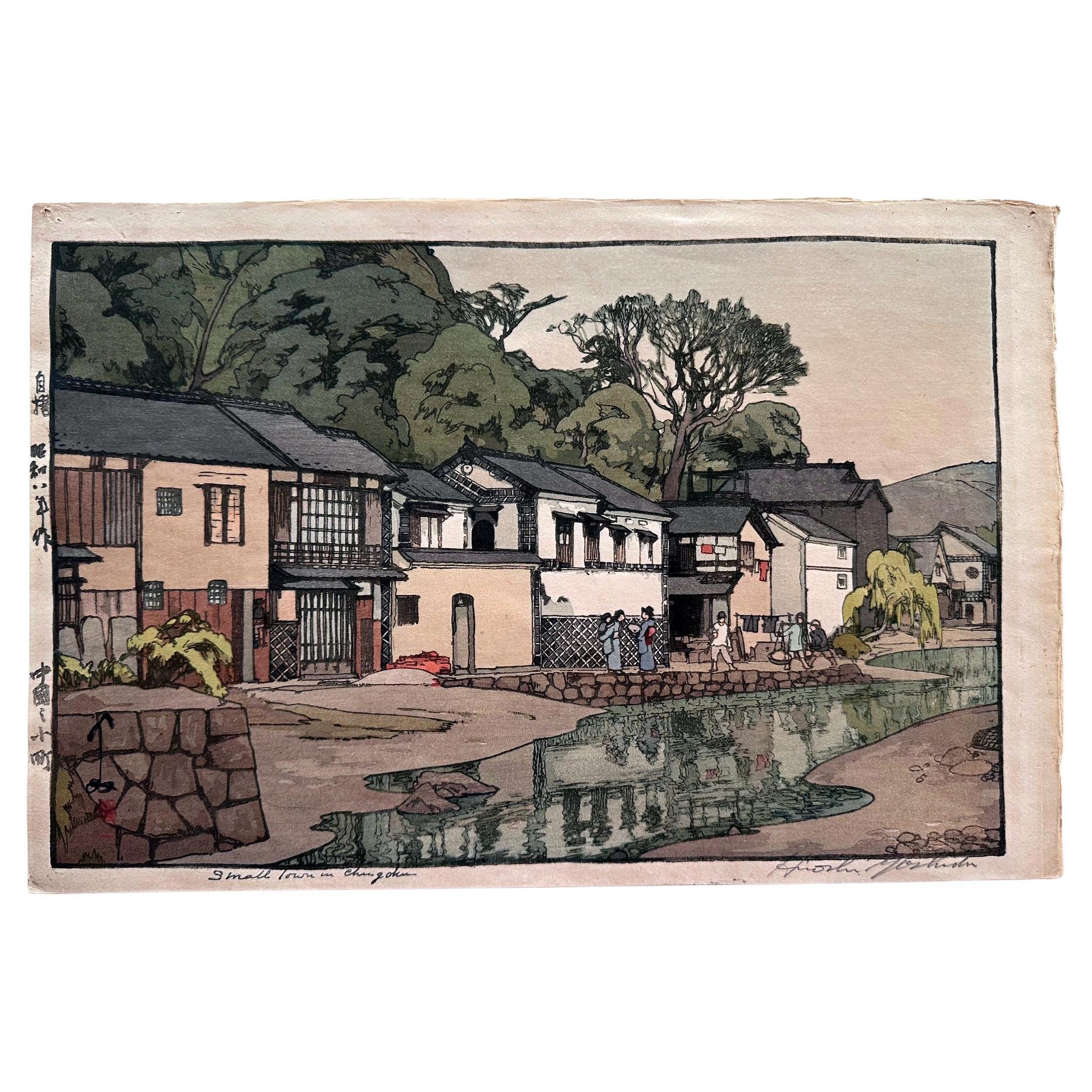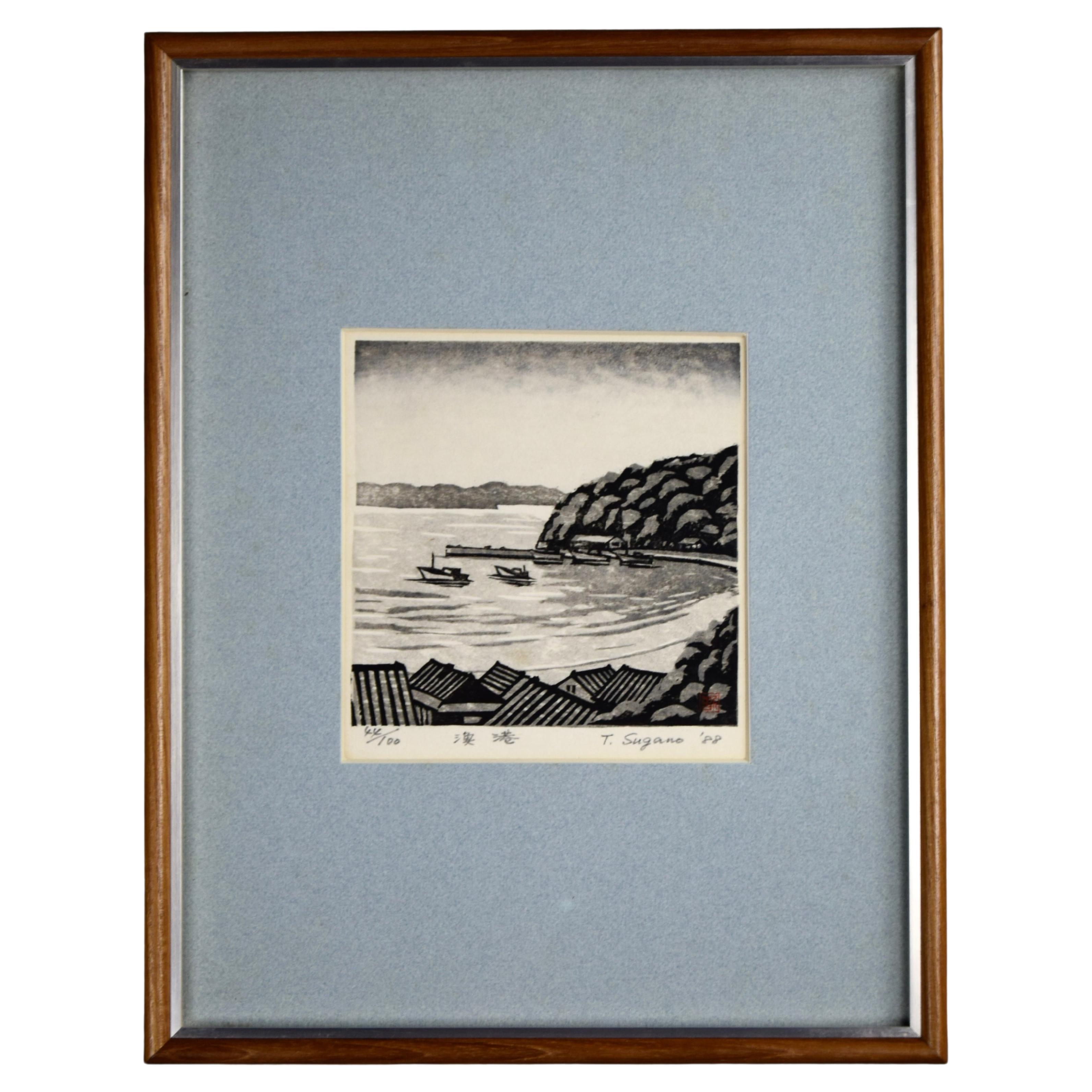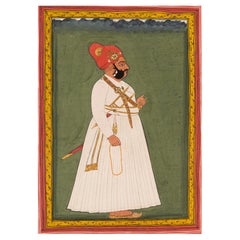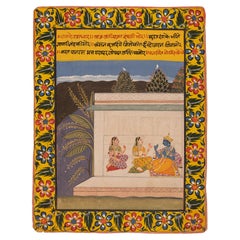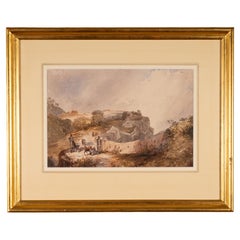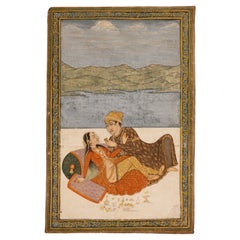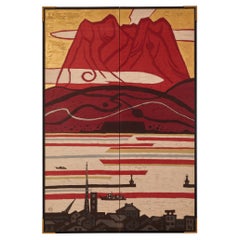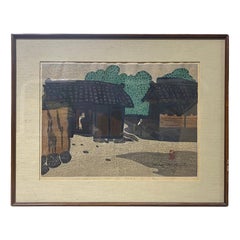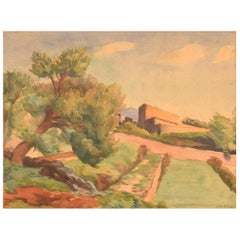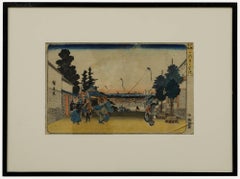Items Similar to Japanese Modernist Painting of a Seaside Village by Torao Ataka Dated 1930
Want more images or videos?
Request additional images or videos from the seller
1 of 7
Japanese Modernist Painting of a Seaside Village by Torao Ataka Dated 1930
$1,295
£978.86
€1,124.88
CA$1,803.28
A$2,006.07
CHF 1,051.61
MX$24,513.74
NOK 13,390.93
SEK 12,605.71
DKK 8,396.83
Shipping
Retrieving quote...The 1stDibs Promise:
Authenticity Guarantee,
Money-Back Guarantee,
24-Hour Cancellation
About the Item
A Modern oil painting of a harbor town with the water and mountains views in the distance.
It is signed on the bottom left hand corner Ataka and dated '30 (1930).
The brushwork is bold and confident. Ataka traveled to Europe and Paris in the late 20's to further his training.
He participated in Salon d'Automne in Paris in 1929.
The Painting is on canvas stretched over a wooden frame.
It measures 19 3/4 x 24 (H x W) inches.
It is unframed.
- Creator:Japanese Studio (Painter)
- Dimensions:Height: 19.75 in (50.17 cm)Width: 24 in (60.96 cm)Depth: 1.5 in (3.81 cm)
- Style:Modern (Of the Period)
- Materials and Techniques:
- Place of Origin:
- Period:
- Date of Manufacture:1930
- Condition:There are minor shrinkage cracks in the paint from aging.
- Seller Location:San Francisco, CA
- Reference Number:1stDibs: LU7756232610072
About the Seller
5.0
Vetted Professional Seller
Every seller passes strict standards for authenticity and reliability
1stDibs seller since 2022
9 sales on 1stDibs
- ShippingRetrieving quote...Shipping from: San Francisco, CA
- Return Policy
Authenticity Guarantee
In the unlikely event there’s an issue with an item’s authenticity, contact us within 1 year for a full refund. DetailsMoney-Back Guarantee
If your item is not as described, is damaged in transit, or does not arrive, contact us within 7 days for a full refund. Details24-Hour Cancellation
You have a 24-hour grace period in which to reconsider your purchase, with no questions asked.Vetted Professional Sellers
Our world-class sellers must adhere to strict standards for service and quality, maintaining the integrity of our listings.Price-Match Guarantee
If you find that a seller listed the same item for a lower price elsewhere, we’ll match it.Trusted Global Delivery
Our best-in-class carrier network provides specialized shipping options worldwide, including custom delivery.More From This Seller
View AllAntique Indian Miniature painting of a Maharaja, Jaipur c. 1800
Located in San Francisco, CA
Offered here is an antique painting of an Indian Maharaja in gouache and gold on paper c. early 19th century or 1800.
A burly Maharaja stands in profile wearing a white jama or garm...
Category
Antique Early 19th Century Indian Paintings and Screens
Materials
Paper
Antique Indian Miniature Painting of Krishna Conversing with Radha in a Pavilion
Located in San Francisco, CA
Another charming painting of Lord Krishna and his paramour Radha along with her consort seated in an elaborate pavilion while having a gestured conversation. The interior setting is...
Category
Early 20th Century Indian Paintings and Screens
Materials
Paper
Anglo Indian Painting of Tipu Sultan's Fortress Nundydroog, Mysore c. 1853 Prov
Located in San Francisco, CA
Offered here is an Anglo-Indian watercolor Painting of Tipu Sultan's Fortress in Nundydroog, Mysore.
A tag on the back indicates "The Fort, Nundy, Droog, Mysore, 1853" and it comes f...
Category
Antique Mid-19th Century Indian Anglo-Indian Paintings and Screens
Materials
Paper
Antique Indian Mughal Painting of a Couple in Erotic Embrace, 19th Century
Located in San Francisco, CA
Offered here is a gouache and gold miniature painting on paper of an amorous couple on a veranda set against a mountain and lake background.
The male dressed in a princely attire is ...
Category
Antique Mid-19th Century Indian Paintings and Screens
Materials
Paper
$740 Sale Price
20% Off
You May Also Like
Japanese Two-Panel Screen, Harbor Scene in a Modernist View
Located in Hudson, NY
Bountiful mountain overlooking a city, divided by an occupied river. The shapes and colors that make up this unique painting allow for an unconventional take on a modern harbor view....
Category
Early 20th Century Japanese Paintings and Screens
Materials
Gold, Brass
Kiyoshi Saito Signed Japanese Woodblock Print Ikarugano-Sato Horyu-Ji Nara A
By Kiyoshi Saitō
Located in Studio City, CA
A beautifully designed and composed woodblock print by famed Japanese printmaker Kiyoshi Saito. Many consider Saito to be one of the most important, if not the most important, contem...
Category
Vintage 1960s Japanese Showa Prints
Materials
Glass, Wood, Paper
Saburosuke Okada, Japan, Watercolor on Paper, Landscape
Located in København, Copenhagen
Saburosuke Okada (b. Japan 1869, d. 1939). Watercolor on paper. Landscape with a tree, circa 1920.
Visible dimensions: 29 × 22 cm.
The frame measures: 2.5 cm.
In very good conditi...
Category
Vintage 1920s Japanese Modern Paintings
Materials
Paper
Early 20th Century Japanese Woodblock - The Seafront
Located in Corsham, GB
Signed and titled in characters. Presented in a black wooden frame. On paper.
Category
20th Century Figurative Prints
Materials
Woodcut
Japanese Woodblock Print Yoshida Hiroshi Small Town in China
By Hiroshi Yoshida
Located in Atlanta, GA
A Japanese woodblock print by Yoshida Hiroshi (1876-1950), entitled Chugoku no komachi (Small Town in China). The horizontal Oban format print was made in Showa 8th year (1933). On t...
Category
Vintage 1930s Japanese Showa Prints
Materials
Paper
Traditional Japanese Woodblock Print featuring the Fishing Village Ine
Located in Weesp, NL
Introducing a captivating masterpiece: "Serene Reflections of Ine – A Journey through Time." Immerse yourself in the allure of 1988's Japanese woodblock print, meticulously crafted a...
Category
Vintage 1980s Japanese Modern Prints
Materials
Glass, Wood, Paper
More Ways To Browse
Modern Japan
1930s Japan
1930s Japanese
Japanese Screens Mountains
Mountain Painting Europe
18th Century Chinese Painting
Japanese Wall Screen
Pair Of Chinese Paintings
Japanese Paper Scroll
Japanese Maple
Japanese Gilt Wood
Meiji Scroll
Asian Bird Paintings
Gilt Lacquer Panel
Four Panel Asian Art
Japanese Silk Brocade
Pair Of Japanese Paintings
Gold Cranes
